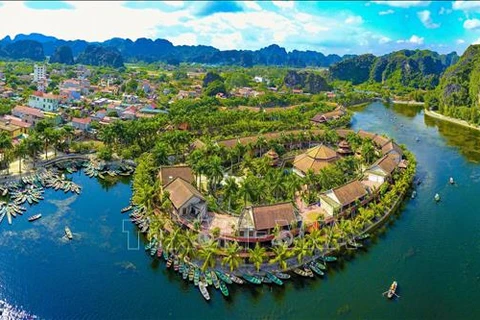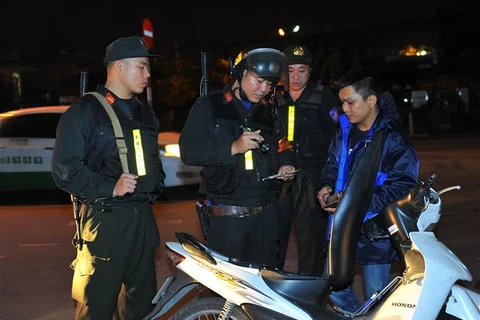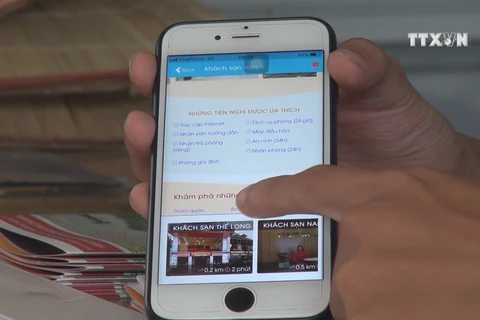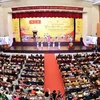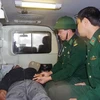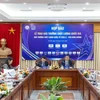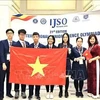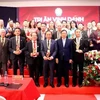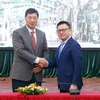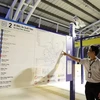Ninh Binh (VNA) – Ninh Binh is proud to welcome President Ho Chi Minh five times during 1946-1959, and the northern province has recorded remarkable changes after making great efforts to follow the beloved leader’s teachings and example.
The first time President Ho came to Ninh Binh was on January 13, 1946, when he visited Bishop Le Huu Tu and residents in Phat Diem, Kim Son district. The next time was on February 10, 1947, when the President chaired a conference of Ninh Binh land-owners held at Nho Quan district. The third time, he travelled to the province on March 15, 1959 to encourage farmers in Yen Khanh district to fight drought. That same year, he attended a conference on the Winter-Spring crop in Ninh Binh in October. The last time he visited Ninh Binh was on July 20, 1960, when he stopped over at Dong Giao farm in Tam Diep town on the way from Nghe An and Thanh Hoa back to Hanoi.
Apart from the visits, President Ho closely followed the situation in Ninh Binh and regularly wrote to the province to commend and encourage the Party organisation and people in the province. It is noteworthy that in 1969, he sent the 10th Party Congress of Ninh Binh his portrait along with valuable advice.
Each visit by the President was an honour for the province, which brought joy and pride for local residents. The visits not only demonstrated his care for the province but also conveyed valuable advice and instructions of the great leader.
At the conference on the Winter-Spring crop in Ninh Binh in October, 1959, the President gave directions for not only the Winter-Spring crop that year, but also the implementation of the three-year socialist reform plan from 1958 to 1960. Furthermore, his instructions conveyed a far-sighted vision, guiding the Party organisation, military and people of Ninh Binh in various aspects over the long-term. He had emphasised unity among the people, within the Party, between religious and non-religious people; patriotic emulation in production; and the practice of thrift, which is still relevant nowadays.
Following his teachings, the authorities and people of Ninh Binh have united in their efforts to overcome difficulties, thus joining people nationwide in the resistance war for national liberation and re-unification. After the national re-unification, the province has made remarkable development, particularly after the re-establishment of Ninh Binh as a province in 1992.
The campaign launched by the Party on studying and following the example of President Ho Chi Minh in 2016 has received warm response from agencies, organisations, military units and the people in Ninh Binh.
In implementing the 12th Politburo’s Directive 05-CT/TW issued on May 15, 2016, on studying and following President Ho Chi Minh’s ideology, morality and style, many localities and units in Ninh Binh have devised innovative and effective activities engaging the public, thus creating strong changes in the awareness and actions of local officials, Party members, civil servants, public employees, and members of the armed forces.
The movement has seen the rise of many bright exemplary individuals, such as Major Le Hai Ninh in Yen Mo district and Duong Hong Quy in Ninh Binh city who donated their organs after death; Party member Do Quang San in Yen Khanh district who built a bridge for the locality; junior high school student Le Thi Minh Ngoc who opened a private library, a math club and a free-of-charge foreign language class for local children.
Nguyen Xuan Hai, standing vice chairman of the provincial Party Committee’s Commission for Education and Information, said the movement has contributed to strengthening the Party organisation and political system, promoting socio-economic development, consolidating defence-security, improving local living standards and enhancing public’s trust in the Party’s leadership.
Ninh Binh has recorded a high growth rate of 8.21 percent a year during 2016-2018. Budget collection in the province surged 300 times from just 40 billion VND in 1992 to 12,777 billion VND in 2018. The local economic structure has shifted towards higher proportion of services and non-agriculture sectors. In 2018, the service sector accounted for 47.1 percent of the local economy, the industry-construction sector - 40.80 percent, and agro-fishery-forestry 12.1 percent.
90 communes, or 84 percent of total communes in Ninh Binh, along with two districts and a city, had been recognised as new rural areas as of the end of 2018.
The poverty rate in the province, based on multi-dimensional criteria, has dropped to 3.63 percent at present.
President Ho has been, and will always be an example for Ninh Binh people to follow in the cause of development.-VNA

